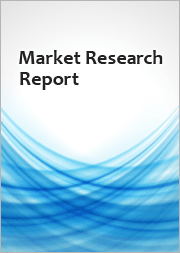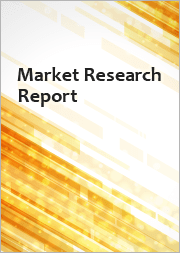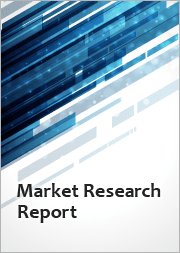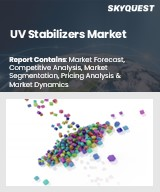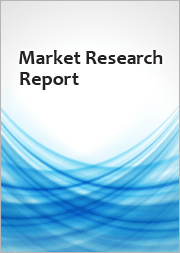
|
시장보고서
상품코드
1870449
디부틸아민 시장 : 종류별, 용도별, 최종 이용 산업별 - 세계 예측(2025-2032년)Dibutylamine Market by Type, Application, End Use Industry - Global Forecast 2025-2032 |
||||||
디부틸아민 시장은 2032년까지 CAGR 5.40%로 7억 1,503만 달러 규모로 성장할 것으로 예측됩니다.
| 주요 시장 통계 | |
|---|---|
| 기준 연도 2024년 | 4억 6,919만 달러 |
| 추정 연도 2025년 | 4억 9,438만 달러 |
| 예측 연도 2032 | 7억 1,503만 달러 |
| CAGR(%) | 5.40% |
산업용 배합제에서 디부틸아민의 전략적 역할, 공급망 동향, 규제 우선순위에 대한 간략한 소개
디부틸아민은 특수 아민 중 중요한 위치를 차지하고 있으며, 여러 산업 밸류체인에서 기초적인 중간체 역할을 하고 있습니다. 화학 제조업체들이 공정 효율을 개선하고 다운스트림 부문이 배합 성능을 중시하는 가운데, 디부틸아민의 물리화학적 특성(중간 정도의 휘발성, 강한 용매화 특성, 다양한 기능성 화학제품과의 호환성)은 농약, 의약품, 산업 응용 분야에서 수요를 지속적으로 뒷받침하고 있습니다. 이러한 기능적 특성과 더불어 진화하는 규제 체계와 원료 경제성의 변화로 인해 이해관계자들은 디부틸아민을 단순한 범용 제품 투입 원료가 아닌 제품 차별화와 비용 관리를 위한 전략적 수단으로 평가할 필요가 있습니다.
디부틸아민 생산, 공급망, 품질 요구사항을 근본적으로 재구성하고, 규제, 운영, 기술의 수렴적 변화를 검증합니다.
디부틸아민의 상황은 단순한 수요 사이클을 넘어 여러 가지 상호 연관된 변화에 의해 재구성되고 있습니다. 첫째, 화학제품의 안전과 배출량에 대한 규제 강화로 인해 제조업체는 합성 경로를 최적화하고, 부산물을 줄이고, 보다 친환경적인 용매와 촉매를 사용해야 합니다. 이러한 규제 모멘텀은 수율 안정성을 개선하고 환경 부하를 줄이는 청정 공정 기술 및 배치식에서 연속식으로의 전환에 대한 투자를 촉진하고 있습니다. 다음으로 의약품 중간체, 농약제제 등 특히 고순도가 요구되는 최종 이용 산업에서 사양관리가 더욱 엄격해지고 있습니다. 이에 따라 순도 등급 제품 라인의 중요성이 높아지고, 미량 불순물 보고가 요구되고 있습니다.
2025년 관세 및 관련 무역 조치가 디부틸아민에 의존하는 이해관계자들의 조달 전략, 현지 생산 투자, 비즈니스 연속성(운영 탄력성)을 재정의하는 방법을 평가합니다.
2025년 관세 및 무역 조치의 도입은 디 부틸 아민 및 관련 중간체에 의존하는 기업의 비용 구조와 조달 논리를 변화시키고 있습니다. 미국으로 원자재 또는 완제품을 수입하는 기업들은 직접적인 비용 영향과 리드타임 연장, 물류 흐름의 변화 등 간접적인 업무 영향을 파악하기 위해 공급 기반 재평가를 진행하고 있습니다. 그 결과, 조달 전략에서 총착륙비용을 고려하고 공급업체의 신뢰성 및 컴플라이언스 실적과 균형을 맞추는 것이 점점 더 중요해지고 있으며, 수년간의 공급업체 관계를 재검토하고 있습니다.
제품 등급의 차이, 다양한 응용 경로, 최종 사용 산업의 요구 사항이 차별화된 조달 및 사양을 촉진하는 방법을 파악하기 위한 심층 세분화 분석
세분화에 초점을 맞춘 분석 결과를 통해 제품 유형, 용도, 최종 사용 산업별로 수요와 제품 차별화의 미묘한 요인을 파악할 수 있습니다. 제품 유형 측면에서 순수 제품 등급과 기술 등급을 구분하는 것이 핵심입니다. 순품급 재료는 특히 의약품 중간체 생산, 고사양 첨가제 제조 등 불순물 관리가 중요한 분야에서 우선적으로 채택됩니다. 한편, 산업용 등급은 비용과 대량 공급이 더 중요한 산업 응용 분야에서 여전히 주력 제품입니다. 애플리케이션 레벨의 트렌드는 이 구도를 더욱 정교하게 만듭니다. 농약 중간체로서 디부틸아민의 역할은 살균제, 제초제, 살충제 중간체를 포함하며, 각 생산 경로는 고유한 순도 요건과 규제 요건을 가지고 있으며, 이는 공급업체 선정 및 분석 요구에 영향을 미칩니다. 화학 중간체 응용 분야에서는 부식 방지제, 고무 가황제, 계면활성제 등의 사용 사례에서 서로 다른 배합 화학적 특성 및 성능 프로파일과의 적합성이 요구되며, 이는 원료 사양 및 다운스트림 공정에 영향을 미칩니다.
지역별 시장 역학 및 규제 상황(아메리카, 유럽, 중동 및 아프리카, 아시아태평양)은 생산 및 상업 전략의 차별화를 촉진합니다.
지역적 동향은 디부틸아민 이해관계자의 생산 기지, 공급망 설계, 규제 준수에 깊은 영향을 미칩니다. 미국 대륙에서는 대규모 농약 및 의약품 고객과의 근접성이 대량 공급과 프리미엄급 제조를 모두 지원하는 환경에서 구매자와 생산자가 활동하고 있습니다. 탄탄한 인프라와 다운스트림 제제 제조업체의 집중은 빠른 제품 개발 주기를 촉진하지만, 지역 환경 규제와 주정부 차원의 허가 제도는 투자 결정과 생산 일정에 영향을 미칩니다.
주요 기업들이 디부틸아민 시장에서 경쟁 우위를 확보하기 위해 공급 신뢰성, 분석 서비스, 지속가능성 이니셔티브를 어떻게 연계하고 있는지 살펴봅니다.
디부틸아민 산업의 기업 전략은 규제 준수, 공급 연속성, 용도별 혁신을 보장할 수 있는 역량을 구축하는 것으로 수렴되고 있습니다. 주요 생산업체들은 엄격한 사양을 요구하는 제약 및 농약 최종사용자를 위해 다양한 등급 제공, 강화된 추적성, 확장된 문서 패키지를 통해 차별화를 꾀하고 있습니다. 반면, 규모와 물류 통합으로 경쟁하는 기업들은 지역 제조 거점이나 위탁생산 파트너십을 활용하여 대량의 산업 수요에 대응하고 있습니다. 또한, 전략적 제휴 및 위탁생산 계약에 의한 뚜렷한 동향도 볼 수 있습니다. 이를 통해 조제업체는 본격적인 생산설비에 대한 자본 지출 없이도 안정적인 공급을 확보할 수 있습니다.
디부틸아민 가치사슬 전반의 사양 관리 강화, 공급처 다변화, 분석 기술 추진, 지속가능성 가속화를 위한 실질적인 전략 제안
업계 리더는 제품 및 프로세스 혁신을 가능하게 하는 동시에 사양 관리, 공급망 탄력성, 규제 대응을 포괄적으로 다루는 협력적 전략을 추구해야 합니다. 첫째, 조달, 품질, R&D 팀 간 기술 사양을 조화시키고, 성능을 유지하면서 공급 장애 시 대체 조달 경로를 가능하게 하는 유연한 등급 정의를 확립합니다. 다음으로, 지역적 이중 조달과 전략적 재고 배치에 투자하여 무역 변동과 물류 병목현상에 대한 노출을 줄이고, 관세 전가 및 리드타임에 대한 기대치를 명확히 하는 조항을 계약에 포함시켜야 합니다.
전문가 인터뷰, 기술 문헌 검토, 삼각측량 기법을 결합한 투명성 높은 조사 기법을 통해 트렌드와 실무적 지식을 검증합니다.
본 분석은 기술 문헌, 규제 발표, 업계 백서, 전문가와의 구조화된 인터뷰를 통해 정성적, 정량적 정보를 통합하여 종합적인 관점을 확보하고자 노력했습니다. 1차 조사에서는 제조, 조달, 규제 기능의 실무자들과의 인터뷰를 통해 사양 요구사항, 조달 관행, 프로세스 혁신에 초점을 맞췄습니다. 2차 조사에서는 학술지, 표준문서, 규제 가이드라인을 활용하여 기술적 특성, 환경적 고려사항, 컴플라이언스 요건 등을 확인했습니다. 가능한 한 삼각측량 기법을 적용하고, 서로 다른 설명을 조정하고, 지역적 특성에 따라 재현 가능한 기술적 관찰 결과를 추출했습니다.
디부틸아민 가치사슬 전반에서 경쟁 우위를 정의하는 품질, 컴플라이언스, 회복탄력성 주제에 대한 개요
디부틸아민 산업은 규격의 엄격화, 규제 요건의 진화, 공급망의 탄력성 강화가 특징입니다. 제약 및 고성능 응용 분야에서 다운스트림 산업이 추적성 향상과 불순물 관리 강화를 요구함에 따라, 제조업체는 공정 최적화, 분석 능력, 지역별 생산 유연성에 대한 투자를 통해 적응할 필요가 있습니다. 무역 조치와 행정적 변화는 안정적인 운영을 유지하기 위한 조달 전략의 다양화와 계약 내용의 명확화의 필요성을 더욱 부각시키고 있습니다.
목차
제1장 서문
제2장 조사 방법
제3장 주요 요약
제4장 시장 개요
제5장 시장 인사이트
제6장 미국 관세의 누적 영향 2025
제7장 AI의 누적 영향 2025
제8장 디부틸아민 시장 : 유형별
- 순품 등급
- 테크니컬 등급
제9장 디부틸아민 시장 : 용도별
- 농약 중간체
- 살균제 중간체
- 제초제 중간체
- 살충제 중간체
- 화학 중간체
- 부식 방지제
- 고무 가황제
- 계면활성제
- 추출 용제
- 의약품 중간체
- 원료의약품
- 첨가제
제10장 디부틸아민 시장 : 최종 이용 산업별
- 농약
- 석유 및 가스
- 페인트 및 코팅
- 의약품
- 고무·플라스틱
제11장 디부틸아민 시장 : 지역별
- 아메리카
- 북미
- 라틴아메리카
- 유럽, 중동 및 아프리카
- 유럽
- 중동
- 아프리카
- 아시아태평양
제12장 디부틸아민 시장 : 그룹별
- ASEAN
- GCC
- EU
- BRICS
- G7
- NATO
제13장 디부틸아민 시장 : 국가별
- 미국
- 캐나다
- 멕시코
- 브라질
- 영국
- 독일
- 프랑스
- 러시아
- 이탈리아
- 스페인
- 중국
- 인도
- 일본
- 호주
- 한국
제14장 경쟁 구도
- 시장 점유율 분석, 2024
- FPNV 포지셔닝 매트릭스, 2024
- 경쟁 분석
- BASF SE
- Dow Inc.
- Evonik Industries AG
- Huntsman Corporation
- Lanxess AG
- Solvay S.A.
- Clariant AG
- Nouryon Chemicals B.V.
- Alkyl Amines Chemicals Ltd.
- Shandong Yipin Biotechnology Co., Ltd.
The Dibutylamine Market is projected to grow by USD 715.03 million at a CAGR of 5.40% by 2032.
| KEY MARKET STATISTICS | |
|---|---|
| Base Year [2024] | USD 469.19 million |
| Estimated Year [2025] | USD 494.38 million |
| Forecast Year [2032] | USD 715.03 million |
| CAGR (%) | 5.40% |
A concise introduction to dibutylamine's strategic role across industrial formulations, supply chain dynamics, and regulatory priorities
Dibutylamine occupies a critical position within specialty amines, serving as an enabling intermediate across multiple industrial value chains. As chemical manufacturers refine process efficiency and as downstream sectors prioritize formulation performance, dibutylamine's physicochemical profile - moderate volatility, strong solvating properties, and compatibility with a range of functional chemistries - continues to sustain demand across agrochemical, pharmaceutical, and industrial applications. These functional attributes, paired with evolving regulatory regimes and shifting feedstock economics, mean that stakeholders must evaluate dibutylamine not only as a commodity input but also as a strategic lever for product differentiation and cost management.
Recent advances in synthetic routes, catalyst selection, and purification techniques have improved product consistency for both technical and higher-purity grades, enabling broader use in sensitive applications while also creating opportunities to reduce impurities that impact downstream formulations. At the same time, heightened scrutiny on supply chain transparency and environmental performance has elevated expectations for manufacturers to document origin, processing conditions, and waste management practices. Consequently, procurement teams, R&D organizations, and regulatory affairs groups should align on specification frameworks and supplier verification protocols to ensure reliability and compliance across the value chain.
Examining the converging regulatory, operational, and technological shifts that are fundamentally reshaping dibutylamine production, supply chains, and quality expectations
The landscape for dibutylamine is being reshaped by several interlocking shifts that transcend simple demand cycles. First, intensified regulatory focus on chemical safety and emissions is prompting manufacturers to optimize synthesis pathways, reduce byproducts, and adopt greener solvents and catalysts. This regulatory momentum is catalyzing investment into cleaner process technologies and batch-to-continuous conversions that improve yield consistency and lower environmental footprints. Second, end-use industries are demanding higher specification control, especially in pharmaceutical intermediates and agrochemical formulations, which is increasing the prominence of pure grade product lines and trace-level impurity reporting.
Meanwhile, supply chain resilience has moved to the top of strategic agendas. Given periodic feedstock disruptions and logistics constraints, companies are diversifying supplier bases and prioritizing regional production capabilities to mitigate single-source exposure. Converging with these dynamics, digitalization is enabling better visibility across procurement, production, and quality assurance functions, allowing for predictive maintenance and more accurate inventory management. Together, these transformative shifts are not isolated; they reinforce one another, producing a more sophisticated market where product quality, transparency, and operational continuity are equally vital.
Assessing how the 2025 tariffs and associated trade measures are redefining sourcing strategies, local production investments, and operational resilience for stakeholders reliant on dibutylamine
The introduction of tariffs and trade measures in 2025 is altering cost structures and sourcing logic for firms that rely on dibutylamine and related intermediates. Companies importing feedstocks or finished product into the United States are reassessing their supply base to understand the direct cost implications and indirect operational impacts such as extended lead times and altered logistics flows. As a result, procurement strategies are increasingly balancing total landed cost considerations with supplier reliability and compliance credentials, prompting a reevaluation of long-standing supplier relationships.
In parallel, some manufacturers have begun localizing certain stages of value-added production to reduce exposure to cross-border trade frictions. This has led to increased investment in regional manufacturing hubs and contract manufacturing relationships within tariff-exempt or lower-tariff jurisdictions. At the same time, non-tariff measures such as strengthened customs documentation requirements and enhanced origin verification are adding administrative burdens that affect working capital and order-to-delivery cycles. For developers of specialty formulations, these shifts necessitate closer coordination between commercial, regulatory, and supply chain teams to maintain margins and avoid formulation interruptions.
Moreover, markets are responding tactically: procurement and pricing teams are instituting more dynamic sourcing agreements that include clauses for tariff pass-through and dedicated contingency inventory. R&D functions are also exploring flexible material specifications that preserve product performance while enabling alternative input materials or process adjustments when specific supply lines are constrained. Overall, the cumulative effect of the 2025 tariff environment is to accelerate localization and contingency planning while encouraging more resilient commercial models throughout the dibutylamine ecosystem.
Deep segmentation analysis uncovering how product grade distinctions, diverse application pathways, and end-use industry requirements drive differentiated procurement and specifications
Insights derived from a segmentation-focused lens reveal nuanced drivers of demand and product differentiation across types, applications, and end-use industries. When viewed through the prism of type, distinctions between pure grade and technical grade are central: pure grade material is prioritized where impurity control is critical, notably in pharmaceutical intermediate production and high-specification excipient manufacture, whereas technical grade remains the workhorse for industrial applications where cost and bulk availability matter more. Application-level dynamics further refine this picture; the role of dibutylamine as an agrochemical intermediate spans fungicide, herbicide, and insecticide intermediates, with each pathway presenting distinct purity and regulatory requirements that influence supplier selection and analytics needs. In chemical intermediate applications, use cases such as corrosion inhibitors, rubber vulcanization agents, and surfactants demand compatibility with different formulation chemistries and performance profiles, which in turn affects raw material specifications and downstream processing steps.
Extraction solvent applications and pharmaceutical intermediates impose additional specification regimes. Extraction uses prioritize solvency parameters and recovery efficiency, while pharmaceutical intermediates require documentation for active pharmaceutical ingredient routes and excipient compatibility, alongside rigorous impurity profiling. Finally, end-use industry segmentation - spanning agrochemicals, oil and gas, paints and coatings, pharmaceuticals, and rubber and plastics - shapes purchasing rhythm, quality thresholds, and logistic cycles. For example, agrochemical manufacturers emphasize seasonal production planning and long-term supplier contracts, whereas specialty chemical and pharmaceutical producers may require smaller, higher-purity batches with tight traceability. These segmentation insights underscore the need for tailored commercial approaches, precise analytical capabilities, and flexible manufacturing that can serve divergent industry expectations.
Regional market dynamics and regulatory landscapes across the Americas, Europe Middle East & Africa, and Asia-Pacific driving differentiated production and commercial strategies
Regional dynamics exert a profound influence on production footprints, supply chain design, and regulatory compliance for dibutylamine stakeholders. In the Americas, buyers and producers operate within an environment where proximity to large agrochemical and pharmaceutical customers supports both bulk supply and premium-grade manufacturing. Infrastructure strength and a concentration of downstream formulators favor rapid product development cycles, but regional environmental regulation and state-level permitting can shape investment choices and production scheduling.
Across Europe, the Middle East & Africa, regulatory stringency and sustainability mandates are prominent drivers of operational change. European regulatory frameworks demand extensive documentation and lifecycle assessments, encouraging manufacturers to invest in cleaner processes and end-of-pipe controls. Meanwhile, markets in the Middle East and Africa are distinguished by accelerating industrialization and energy-sector applications, resulting in targeted expansion for oil and gas-related formulations and corrosion-control chemistries. In the Asia-Pacific region, manufacturing scale and diversified supplier networks underpin a complex mix of both commodity supply and specialized grade production. Rapid growth in agrochemical and pharmaceutical manufacturing in parts of Asia-Pacific incentivizes investments in localized capacity, while logistical hubs and integrated chemical parks facilitate both export-oriented production and regional distribution. Taken together, these regional variations necessitate tailored commercial strategies, regulatory alignment plans, and investments in local capabilities to support market-specific demand profiles.
How leading firms are aligning supply reliability, analytical services, and sustainability initiatives to secure competitive advantage in dibutylamine markets
Corporate strategies within the dibutylamine ecosystem are converging on capabilities that ensure regulatory compliance, supply continuity, and application-focused innovation. Leading producers differentiate by offering multiple grades, enhanced traceability, and extended documentation packages to serve pharmaceutical and agrochemical end users that require stringent specifications. Others compete on scale and logistics integration, leveraging regional manufacturing hubs and contract manufacturing partnerships to meet bulk industrial demand. There is also a clear trend toward strategic alliances and tolling arrangements that allow formulators to secure consistent supply without the capital outlay of full-scale production facilities.
Investment in laboratory capabilities and process analytics is another common theme; companies that can provide comprehensive impurity profiles, stability data, and custom blending services capture greater value with downstream customers. In parallel, some firms are accelerating decarbonization and waste minimization projects to satisfy corporate sustainability objectives and customer expectations for greener inputs. These initiatives often include energy efficiency upgrades, solvent recovery systems, and waste-stream valorization to reduce lifecycle environmental impacts. Collectively, these strategic orientations indicate that market participants who integrate technical support, logistical reliability, and sustainability credentials are best positioned to meet evolving buyer requirements across diverse industrial sectors.
Actionable strategic recommendations to strengthen specification control, diversify sourcing, advance analytics, and accelerate sustainability across dibutylamine value chains
Industry leaders should pursue a coordinated strategy that addresses specification management, supply chain resilience, and regulatory alignment while enabling product and process innovation. First, harmonize technical specifications across procurement, quality, and R&D teams to create flexible grade definitions that maintain performance while enabling alternative sourcing pathways during disruptions. Second, invest in regional dual-sourcing and strategic inventory positioning to reduce exposure to trade fluctuations and logistical bottlenecks, and ensure contracts incorporate clauses that clarify tariff pass-through and lead-time expectations.
Third, enhance analytical and traceability capabilities by expanding in-house or partner laboratory services to deliver detailed impurity and stability data. This enables faster qualification of new suppliers and supports higher-value applications such as pharmaceutical intermediates. Fourth, prioritize process improvements that lower environmental footprints, including solvent recovery, energy optimization, and waste-stream management, to meet tightening regulatory standards and customer sustainability expectations. Fifth, develop commercial models that include tolling, co-manufacturing, and value-added service offerings to capture higher-margin opportunities and deepen customer relationships. By executing these recommendations in tandem, organizations can reduce operational risk, unlock new application areas, and align more closely with the performance and compliance demands of their most critical customers.
Transparent research methodology combining expert interviews, technical literature review, and triangulation techniques to validate trends and practical insights
This analysis synthesizes qualitative and quantitative inputs across technical literature, regulatory releases, industry white papers, and structured interviews with subject-matter experts to ensure a comprehensive perspective. Primary research included consultations with practitioners across manufacturing, procurement, and regulatory functions, focusing on specification needs, sourcing practices, and process innovations. Secondary research drew on peer-reviewed journals, standards documents, and publicly available regulatory guidance to validate technical characteristics, environmental considerations, and compliance requirements. Wherever possible, triangulation methods were applied to reconcile differing accounts and to isolate reproducible technical observations from regional idiosyncrasies.
Analytical rigor was maintained through cross-checking process descriptions and specification thresholds against multiple industry sources, and by assessing company disclosures regarding capacity investments, sustainability initiatives, and product portfolios. Limitations are acknowledged where proprietary data or commercially sensitive details were not accessible; in such cases, conclusions emphasize observable trends and documented practice rather than proprietary commercial metrics. The methodology prioritizes transparency in assumptions and source attribution, enabling readers to understand the evidentiary basis for the insights and to apply the findings within their own organizational contexts.
Concluding synthesis of quality, compliance, and resilience themes that will define competitive advantage across dibutylamine value chains
The dibutylamine landscape is characterized by increasing specification rigor, evolving regulatory expectations, and a heightened emphasis on supply chain resilience. As downstream industries demand greater traceability and tighter impurity controls for pharmaceutical and high-performance applications, manufacturers must adapt through investments in process optimization, analytical capabilities, and regional production flexibility. Trade measures and administrative changes have further underscored the need for diversified procurement strategies and contractual clarity to maintain consistent operations.
Looking forward, the most successful organizations will be those that integrate technical competence, operational resilience, and sustainability into coherent business models. By aligning procurement, R&D, and compliance functions, companies can reduce exposure to external shocks while unlocking higher-margin applications and strengthening customer partnerships. Ultimately, a proactive approach that anticipates regulatory shifts, prioritizes cleaner production practices, and builds flexible sourcing architectures will be essential to navigate the complexities of the dibutylamine value chain and to capture long-term competitive advantage.
Table of Contents
1. Preface
- 1.1. Objectives of the Study
- 1.2. Market Segmentation & Coverage
- 1.3. Years Considered for the Study
- 1.4. Currency & Pricing
- 1.5. Language
- 1.6. Stakeholders
2. Research Methodology
3. Executive Summary
4. Market Overview
5. Market Insights
- 5.1. Rapid adoption of bio-based dibutylamine production methods to minimize carbon footprint and comply with emerging EU sustainability mandates
- 5.2. Increased utilization of dibutylamine as a key intermediate in next-generation phosphonate pesticide formulations targeting resistant crop pests
- 5.3. Growing integration of closed-loop amination reactors in North American facilities to curtail VOC emissions and streamline waste management
- 5.4. Expansion of dibutylamine-driven surfactant development in eco-friendly personal care products amid rising consumer demand for green cosmetics
- 5.5. Surge in pharmaceutical sector demand for high-purity dibutylamine intermediates in complex API syntheses for oncology and neurology treatments
- 5.6. Pricing volatility of upstream butanol and ammonia feedstocks triggering risk management strategies among major dibutylamine producers
- 5.7. Implementation of advanced catalytic hydrogen-borrowing processes to enhance dibutylamine yield and reduce hazardous by-products in manufacturing
6. Cumulative Impact of United States Tariffs 2025
7. Cumulative Impact of Artificial Intelligence 2025
8. Dibutylamine Market, by Type
- 8.1. Pure Grade
- 8.2. Technical Grade
9. Dibutylamine Market, by Application
- 9.1. Agrochemical Intermediates
- 9.1.1. Fungicide Intermediates
- 9.1.2. Herbicide Intermediates
- 9.1.3. Insecticide Intermediates
- 9.2. Chemical Intermediates
- 9.2.1. Corrosion Inhibitors
- 9.2.2. Rubber Vulcanization Agents
- 9.2.3. Surfactants
- 9.3. Extraction Solvent
- 9.4. Pharmaceutical Intermediates
- 9.4.1. Active Pharmaceutical Ingredients
- 9.4.2. Excipients
10. Dibutylamine Market, by End Use Industry
- 10.1. Agrochemicals
- 10.2. Oil And Gas
- 10.3. Paints And Coatings
- 10.4. Pharmaceuticals
- 10.5. Rubber And Plastics
11. Dibutylamine Market, by Region
- 11.1. Americas
- 11.1.1. North America
- 11.1.2. Latin America
- 11.2. Europe, Middle East & Africa
- 11.2.1. Europe
- 11.2.2. Middle East
- 11.2.3. Africa
- 11.3. Asia-Pacific
12. Dibutylamine Market, by Group
- 12.1. ASEAN
- 12.2. GCC
- 12.3. European Union
- 12.4. BRICS
- 12.5. G7
- 12.6. NATO
13. Dibutylamine Market, by Country
- 13.1. United States
- 13.2. Canada
- 13.3. Mexico
- 13.4. Brazil
- 13.5. United Kingdom
- 13.6. Germany
- 13.7. France
- 13.8. Russia
- 13.9. Italy
- 13.10. Spain
- 13.11. China
- 13.12. India
- 13.13. Japan
- 13.14. Australia
- 13.15. South Korea
14. Competitive Landscape
- 14.1. Market Share Analysis, 2024
- 14.2. FPNV Positioning Matrix, 2024
- 14.3. Competitive Analysis
- 14.3.1. BASF SE
- 14.3.2. Dow Inc.
- 14.3.3. Evonik Industries AG
- 14.3.4. Huntsman Corporation
- 14.3.5. Lanxess AG
- 14.3.6. Solvay S.A.
- 14.3.7. Clariant AG
- 14.3.8. Nouryon Chemicals B.V.
- 14.3.9. Alkyl Amines Chemicals Ltd.
- 14.3.10. Shandong Yipin Biotechnology Co., Ltd.






